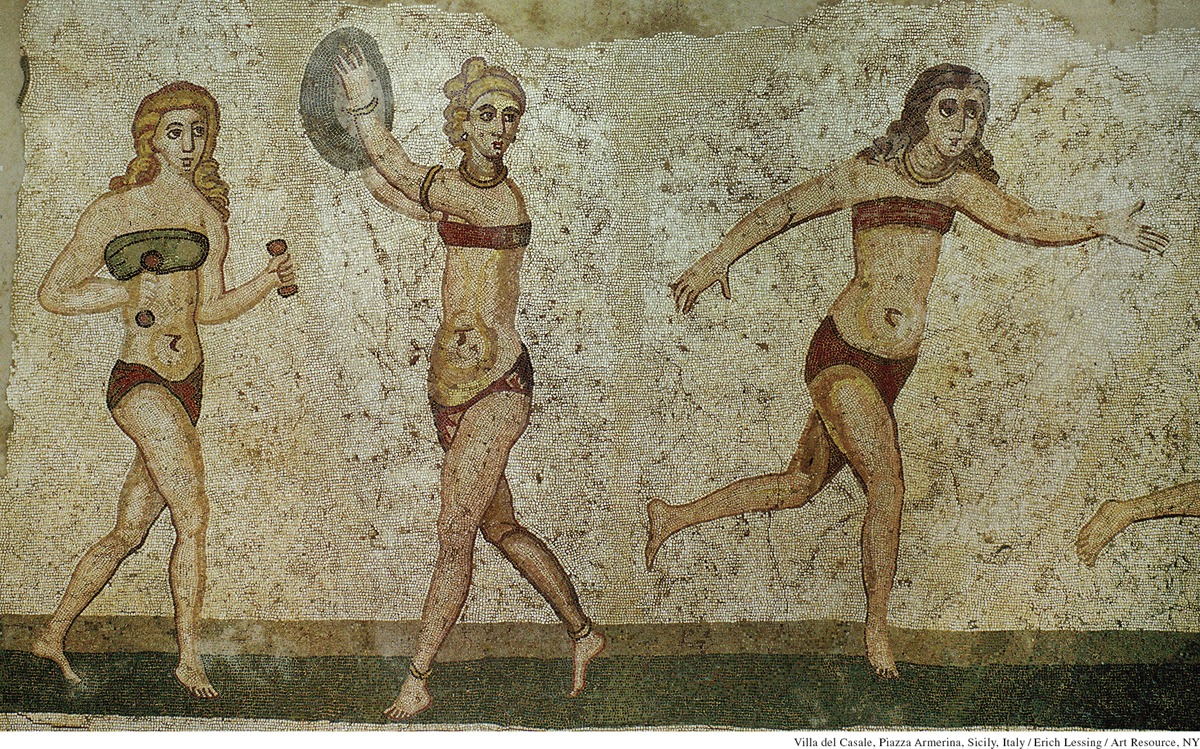Social and Cultural Transformation in the Western Roman Empire
Printed Page 234
Important EventsSocial and Cultural Transformation in the Western Roman Empire
The gradual replacement of government in the western Roman Empire by barbarian kingdoms set in motion social and cultural transformations. The newcomers and their Roman subjects created novel ways of life by combining old traditions, as Athaulf, king of the Visigoths (r. 410–415), explained after marrying a Roman noblewoman:
At the start I wanted to erase the Romans’ name and turn their land into a Gothic empire, doing myself what Augustus had done. But I have learned that the Goths’ freewheeling wildness will never accept the rule of law, and that state with no law is no state. Thus, I have more wisely chosen another path to glory: reviving the Roman name with Gothic vigor. I pray that future generations will remember me as the founder of a Roman restoration.
This process of social and cultural transformation promoted stability by producing new law codes but undermined long-term security by weakening the economic situation.
Roman law was the most influential precedent for the new kings in constructing states. Their tribes had never possessed written laws, but their new states required legal codes to create a sense of justice and keep order. The Visigothic kings issued the first “barbarian law code.” Published in Latin in about 475, it made fines and compensation the primary method for resolving disputes. Clovis also emphasized written law for the Merovingian kingdom. His code, also published in Latin between about 507 and 511, promoted social order through clear penalties for specific crimes, formalizing a system of fines intended to defuse feuds and vendettas between individuals and clans. The most prominent component of this system was wergild, the payment a murderer had to make as compensation for his crime, to prevent endless cycles of revenge. The king received about one-third of the fine, with the rest paid to the victim’s family.
Since laws indicate social values, the differing amounts of wergild in Clovis’s code suggest the relative values of different categories of people in his kingdom. Murdering a woman of childbearing age, a boy under twelve, or a man in the king’s retinue brought a massive fine of six hundred gold coins, enough to buy six hundred cattle. A woman past childbearing age (specified as sixty years), a young girl, or a freeborn man was valued at two hundred gold coins. Ordinary slaves rated thirty-five.
The migrations of new groups into Roman territory had the unintended consequence of harming the empire’s already weakened economy. The Vandals’ violence battered many towns in Gaul, hastening a decline in urban population. In the countryside, now beyond the control of any central government, wealthy Romans built sprawling villas on extensive estates, staffed by tenants bound to the land like slaves. These establishments aimed to operate as self-sufficient units by producing all they needed, defending themselves against barbarian raids, and keeping their distance from any authorities. The owners shunned municipal offices and tax collection, the public services that had supplied the lifeblood of Roman administration. Provincial government slowly disappeared.

In some areas now outside reach of the central government, the infrastructure of trade—roads and bridges—fell into disrepair with no public-spirited elite to maintain them. The elite holed up in their fortress-like households. They could afford to protect themselves: the annual income of the richest of them rivaled the revenue of an entire province in the old western empire.
REVIEW QUESTION How did their migrations and invasions change the barbarians themselves and the Roman Empire?
In some cases, these fortunate few helped pass down Roman learning to later ages. Cassiodorus (c. 490–585) founded a monastery on his ancestral estate in Italy in the 550s after a career in imperial administration. He gave the monks the task of copying manuscripts to keep their contents from disappearing as old ones disintegrated. His own book, Institutions, summed up what he saw as the foundation of ancient Greek and Roman culture by listing the books an educated person should read; it included ancient classical literature as well as Christian texts.